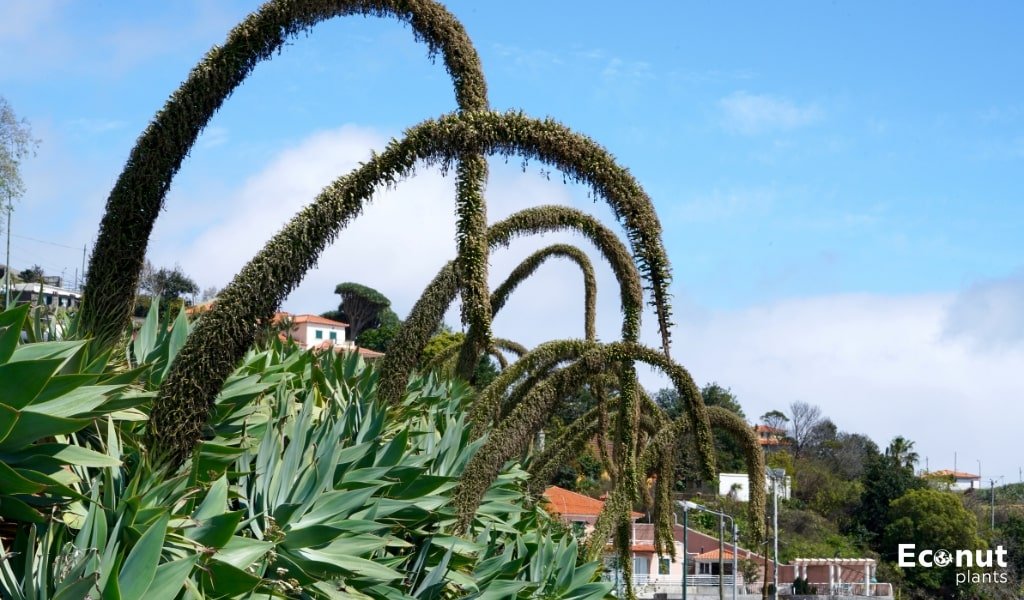Are you searching to find a tall succulent to add to your indoor or outdoor garden? There are several options available to you, depending on the area and size that you have available. This article features towering succulents that reach a specific height.
Succulents are very interesting and versatile plants. Some so many different textures and shapes may be used to add interest to a succulent or rock garden. Succulents also make great houseplants if you have a sunny window and tend to forget to water them.
If you’re looking for a succulent to add height to your yard or a towering houseplant that makes a statement, look no further. These 17 plants are sure to start a discussion and provide a yard or collection
1. Fox Tail Agave
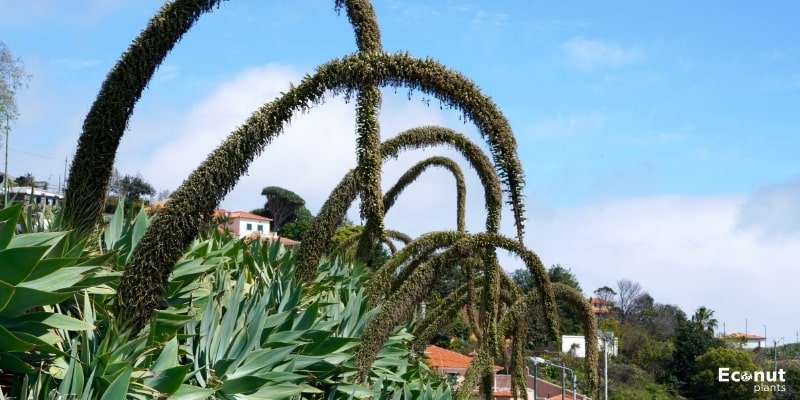
Scientific name: Agave attenuata
Sun-requirements: Full sun
Height: 4’-5’ tall
Hardiness Zone: 9-11
This gorgeous Agave forms a silvery-green rosette as it grows. As they open, the long, fleshy leaves have a gentle arch and are pointy.
The somewhat imposing flower stalk that resembles a tail gives Fox Tail its name. Greenish-yellow blooms on this stalk fall to reveal seed pods that develop into tiny plantlets.
Mezcal and tequila, two alcoholic beverages derived from the centers of agave plants, are commonly linked to these plants. That being said, this specific cultivar is not frequently used for human consumption. Another option for making low-glycaemic sweet syrup is to use the agave plant’s core.
2. African Milk Tree

Scientific name: Euphorbia trigona
Sun-requirements: Part sun
Height: 9′ tall
Hardiness Zone: 9-11
Officially known as Euphorbia trigona, the African Milk Tree is a tall tree that can grow. This succulent comes from West Africa and is distinguished by its tall, thin green stems that are covered with sharp thorns and have a milky sap that is filled with latex.
This striking succulent requires plenty of bright light, well-draining soil, and occasional watering. It’s an intriguing addition to any collection of succulents because of its distinctive look.
3. Saguaro
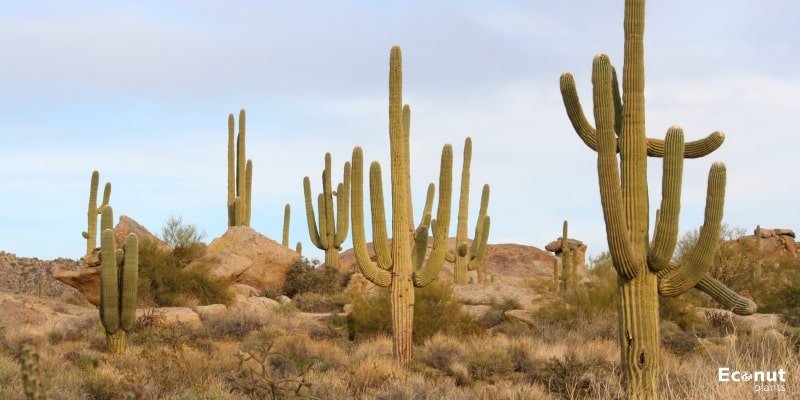
Scientific name: Carnegiea gigantea
Sun-requirements: Full Sun
Height: 40′ tall
Hardiness Zone: 8-11
One of the floras that best defines the Sonoran Desert is the saguaro cactus. These are big, columnar cacti that resemble trees and, with age, produce branches; some never develop arms.
There can be more than 25 of these arms, which usually curve upward. Saguaros have red fruit in the summer, white blooms in the late spring, and spines covering them all.
4. Desert Rose

Scientific name: Adenium obesum
Sun-requirements: Full Sun
Height: 3’-9’ tall
Hardiness Zone: 11-12
The desert rose, as its name implies, is a slow-growing succulent that has stunning pink and white blossoms that catch everyone’s eye. This succulent is generally easy to care for, but because of its stunning pink flowers, you might think it’s difficult.
This plant requires sun, well-draining soil, and sandy conditions to thrive in tropical climates. To maintain the plant’s attractive appearance, you will need to monitor it annually if you wish to grow this succulent outside.
5. Joshua Tree
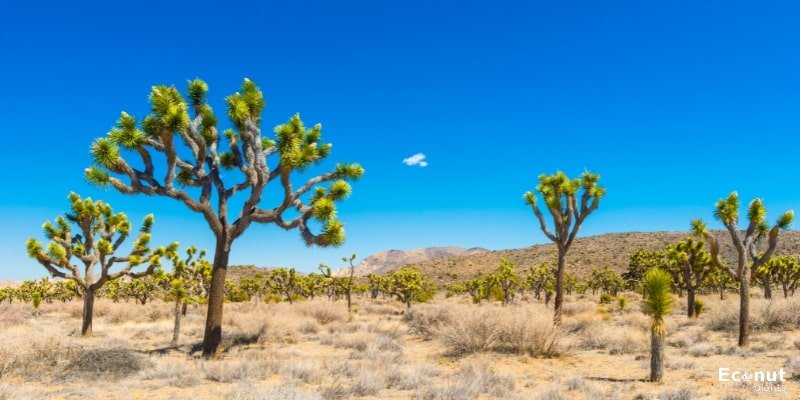
Scientific name: Yucca brevifolia
Sun-requirements: Full Sun
Height: 40’ tall
Hardiness Zone: 6-10
Joshua trees are succulents that require a lot of room to grow. It appears to have a fur coat on because of the way that it comes to hold onto the short, dry leaves. The main stem divides into thick, ornamental “arms” that gently twist and terminate in pointed, green leaves.
They resemble cheerleaders in a desert setting! Huge panicles of white flowers appear in the spring, but they are pollinated by a particular moth, which prevents them from growing in Arizona, California, Nevada, or Utah.
6. Elephant Bush
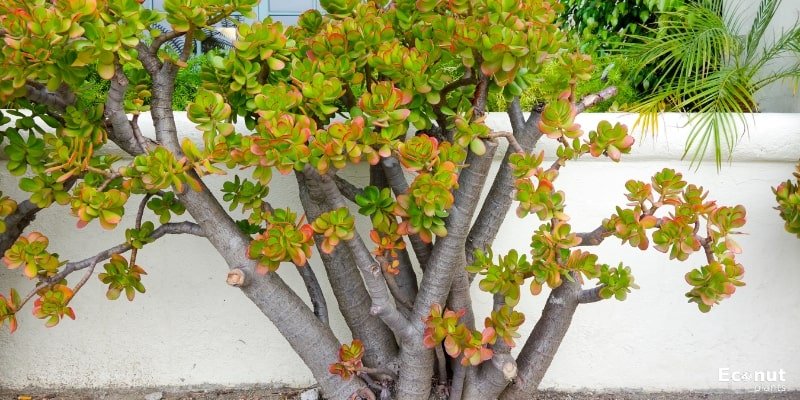
Scientific name: Portulacaria Afra
Sun-requirements: Part Shade, Full Sun
Height: 8’-12’ tall
Hardiness Zone: 10-11
This succulent’s name comes from the fact that elephants in Africa, where it is native, eat it, not from how it looks. Although it can reach up to 20 feet in the wild, when grown in a container, it won’t go much taller than a modest 4 feet. With its woody stalks and tiny leaves, this bushy succulent resembles a jade plant.
Elephant bush can develop clusters of tiny pink flowers at the tips of its branches when it wakes up from its winter dormancy in the spring. It thrives in bright, indirect sunshine because too much of it will burn the leaves off.
7. Eve’s Needle
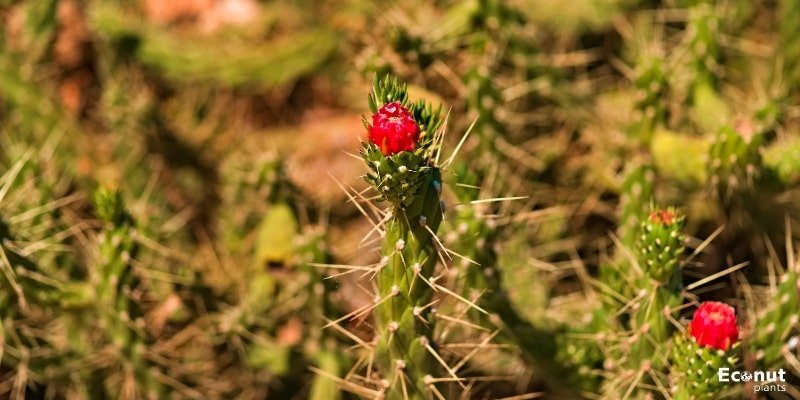
Scientific name: Austrocylindropuntia subulata
Sun-requirements: Part Shade, Full Sun
Height: 12’ tall
Hardiness Zone: 9-11
The Austrocylindropuntia Subulata succulent, also referred to as Eve’s needle, is a large-growing cactus that can grow up to 13 feet tall. This plant often produces pink blooms in the summer and has long, slender, spiky clusters at the end. This succulent can withstand brief flooding but prefers dry environments.
8. Snake Plant
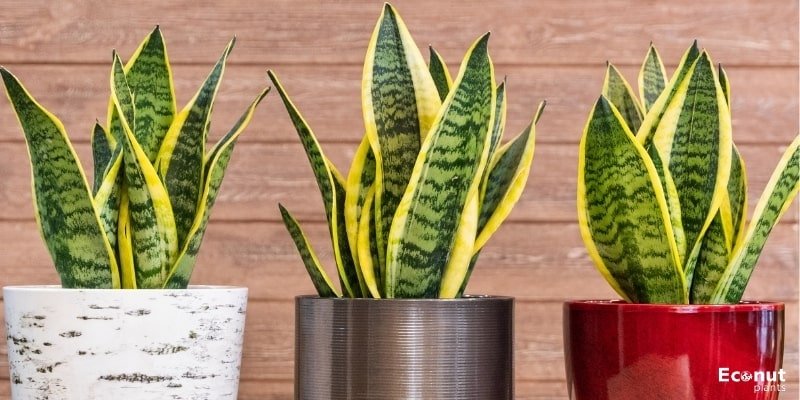
Scientific name: Sansevieria trifasciata
Sun-requirements: Part Shade, Full Sun
Height: 8’ tall
Hardiness Zone: 10-12
The snake plant is a favourite among many plant caregivers. It is commonly referred to as Sansevieria trifasciata. Originating in West Africa.
Sansevieria trifasciata is a low-maintenance plant that requires little care. The broad leaves of the snake plant taper to a tip resembling a sword. Tall succulents grow best in warm to partly cold areas.
The snake plant can withstand droughts but is susceptible to root rot from excessive irrigation. Therefore, it’s better to wait to water the soil until it’s dry.
9. Ocotillo
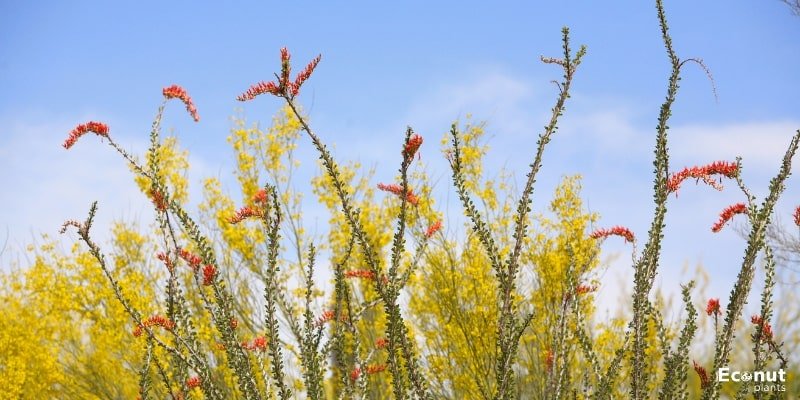
Scientific name: Fouquieria splendens
Sun-requirements: Full Sun
Height: 20’ tall
Hardiness Zone: 7-11
Ocotillo has a unique look with its tall, thin stems shaped like a vase. The stems tend to arch in the direction of the wind and exhibit a marble pattern of colours of grey, blue, and green. On the ribcage’s ridges, it features tiny, twisted leaves.
Depending on how much water it contains, they come and go. Thus, occasionally you will get a nearly bare plant, and other times one with lots of foliage. They also undergo colour changes!
Usually green at first, they can turn orange or red. Then, in the summer, the tips of the tall stems will bear long, tubular crimson flowers. Its long stems and colourful display add a very unique touch to gardens in a variety of informal styles, from urban to xeric, that have a strong personality.
When you combine that with this slim beauty’s ever-changing appearance, you have a compelling element of fascination and even a focus point.
10. Mother of Millions
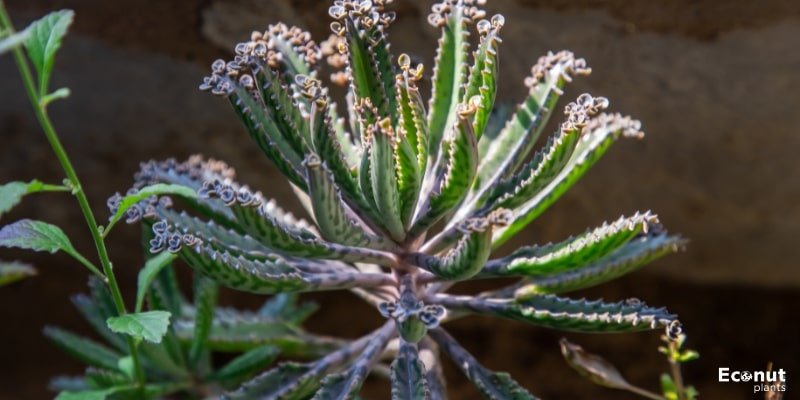
Scientific name: Kalanchoe delagoensis
Sun-requirements: Full Sun
Height: 7’ tall
Hardiness Zone: 10-11
A special type of succulent known as the “mother of millions,” it bears many plantlets at the leaf margin that sprout into new plants. It can reach an impressive height of 7 feet and a width of 3 feet in its natural habitat. Because it reproduces quickly, it is regarded as invasive in some areas.
11. Spineless Yucca
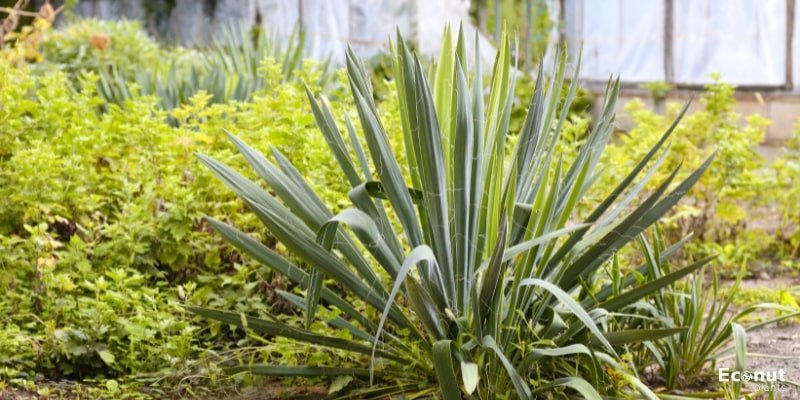
Scientific name: Yucca elephantipes
Sun-requirements: Full Sun
Height: 15’-30’ tall
Hardiness Zone: 9-11
Because they can grow both indoors and outdoors, spineless yucca succulents are quite remarkable. For optimal light exposure, place these eye-catching plants near an interior window or plant them outdoors in well-draining soil they thrive in the climate of Southern California! These succulents, in contrast to most yucca types, have softer leaves that are less likely to prickle you.
12. Sticks on Fire
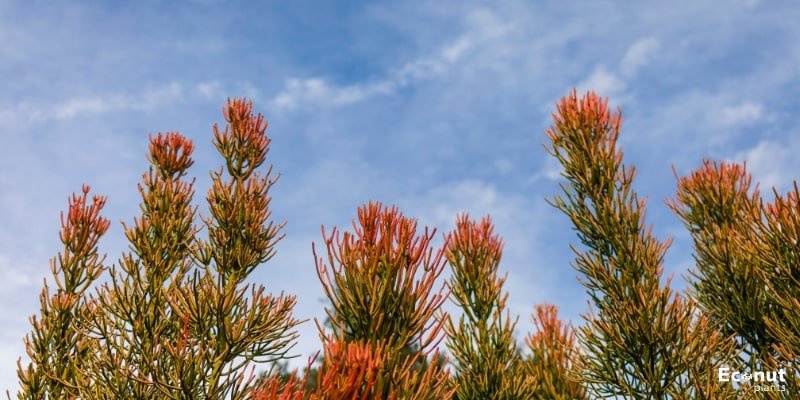
Scientific name: Euphorbia tirucalli
Sun-requirements: Full Sun
Height: 4’-16’ tall
Hardiness Zone: 10-12
Pencil Plant or Sticks on Fire are common names for Euphorbia tirucalli. In its natural habitat, this bright and towering succulent can grow up to 40 feet tall. In southern California, this plant normally grows to a height of 10 feet and a width of 5 feet.
Plants are relatively easy to identify. Pencil-like stems that can be green, orange, red, or a vibrant display of yellows, oranges, or green make up this unusual succulent.
Reaching up to 6 feet, this tall succulent can be kept inside or in a container. This large succulent needs the brightest spot in the house as it is a houseplant. This is one really well-liked succulent. I can find some in the mixed succulent pots they offer at my neighbourhood grocery store.
13. Queen of the Night

Scientific name: Epiphyllum oxypetalum
Sun-requirements: Bright Indirect Light
Height: 10’ tall
Hardiness Zone: 10-11
The tall, succulent Epiphyllum oxypetalum grows in an erect manner. It bears huge white blooms that open for one night only in the summer and thin, waxy leaves.
The Queen of the Night has fragrant blossoms and can grow up to eight feet tall. Originating in Central America, Epiphyllum oxypetalum is a beloved specimen among enthusiasts for its delicate beauty.
14. Fishhook Barrel Cactus
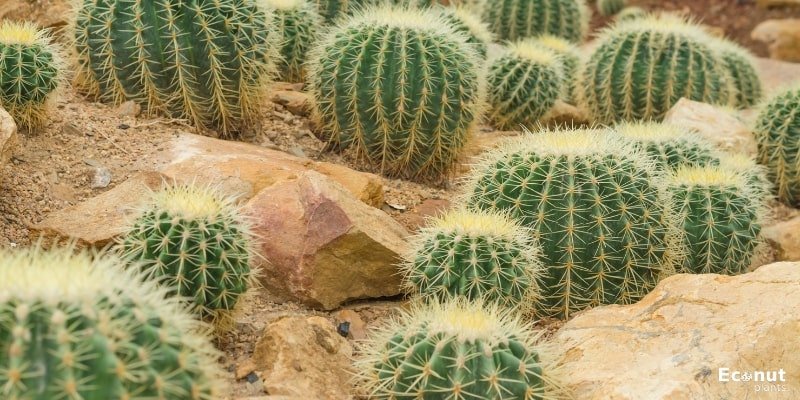
Scientific name: Ferocactus wislizeni
Sun-requirements: Full Sun
Height: 3–6 ft
Hardiness Zone: 9-11
Tall and succulent, the Fishhook Barrel Cactus is indigenous to the deserts of northern Mexico and the southwestern United States. Its enormous, hooked spines give the cactus its name. Other names for the fishhook barrel cactus, which got its name from its shape, include candy barrel cactus, Southwestern barrel cactus, and Arizona barrel cactus.
Throughout the summer, the cactus blooms little yellow flowers. The cactus will provide edible, tiny, spherical fruits once the petals fade. The cacti can endure months without water and frigid temperatures. A common landscape plant in arid areas, the Fishhook Barrel Cactus can be grown as a hedge or as an accent plant.
15. Candelabra Spurge
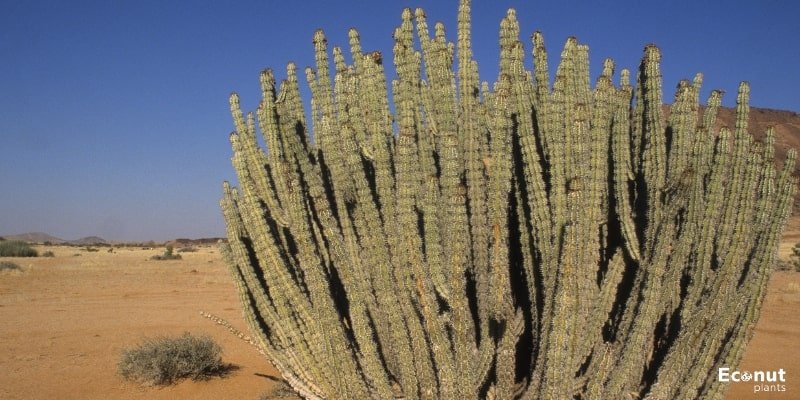
Scientific name: Euphorbia ammak ‘Variegata’
Sun-requirements: Full Sun
Height: 15’-20’ tall
Hardiness Zone: 9-11
This Euphorbia has gorgeous, marbled stems and branches that swirl in shades of cream and blue. The four-sided stem structures branch out at around three feet tall, with their edges dotted with spines. The plant is known as the Candelabra Spurge because of its outward-growing, upward-facing branches.
This plant would thrive better as a houseplant or in a container that can be moved inside during the colder months if you live north of Zone 9. It prefers warm temperatures, lots of sunshine, and little humidity. The sap from this succulent should not be touched since it might irritate skin and eyes and is poisonous if eaten.
16. Madagascar Palm

Scientific name: Pachypodium lamerei
Sun-requirements: Full Sun
Height: 15’tall
Hardiness Zone: 9-11
Pachypodium Lamerei, also called the Madagascar palm, is a tall, thin succulent with a bushy, spiky crown. Usually growing tall, this plant divides its leaves into tiny branches to give it a remarkable appearance that sets it apart from other nearby plants. Despite often growing slowly, this succulent can reach a height of up to 6 meters when it reaches maturity.
Furthermore, they are thought to be simple to cultivate since, once they establish a variety of colours, including brown, purple, pink, yellow, and shades of green, they need minimal water. Still, succulents with palms from Madagascar are wonderful plants that will make a wonderful addition to your house.
17. Jade Plant
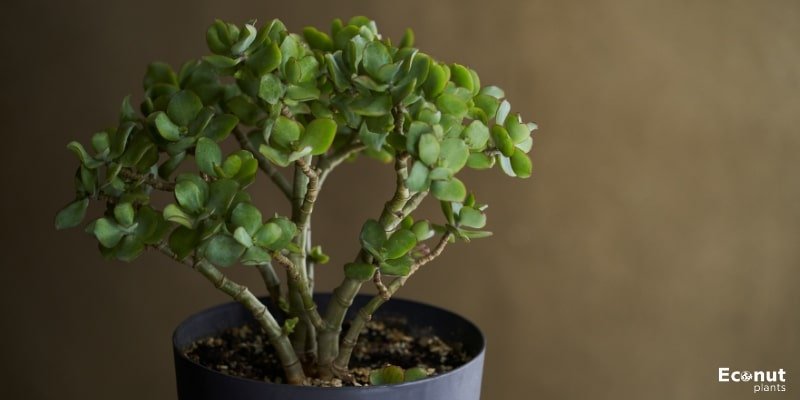
Scientific name: Crassula Ovata
Sun-requirements: Bright Indirect Light
Height: 5’ tall
Hardiness Zone: 10-11
A low-maintenance succulent with good luck and fortune-bringing properties is the jade plant. When planted in direct sunlight, the glossy green foliage takes on a crimson hue. Even though it grows slowly.

